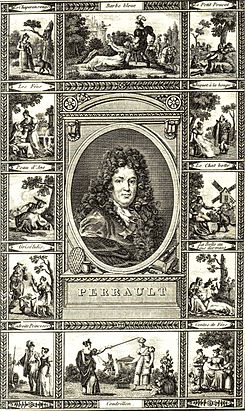Charles Perrault
He attended very good schools and studied law before embarking on a career in government service, following in the footsteps of his father and elder brother Jean.
When the Academy of Inscriptions and Belles-Lettres was founded in 1663, Perrault was appointed its secretary and served under Jean Baptiste Colbert, finance minister to King Louis XIV.
King Louis himself maintained a public air of benevolence towards Bernini, ordering the issuing of a royal bronze portrait medal in honor of the artist in 1674.
The king was so displeased with Bernini's equestrian statue of him that he ordered it to be destroyed; however, his courtiers prevailed upon him to have it redone instead, with a head depicting the Roman hero Marcus Curtius.
Perrault produced the guidebook for the labyrinth, Labyrinte de Versailles, printed at the royal press, Paris, in 1677, and illustrated by Sebastien le Clerc.
[12] Philippe Quinault, a longtime family friend of the Perraults, quickly gained a reputation as the librettist for the new musical genre known as opera, collaborating with composer Jean-Baptiste Lully.
[citation needed] In 1682, Colbert forced Perrault into retirement at the age of 56, assigning his tasks to his own son, Jules-Armand, marquis d'Ormoy.
Colbert's bitter rival succeeded him, François-Michel le Tellier, Marquis de Louvois, and quickly removed Perrault from his other appointments.
[3] On 12 January 2016, Google honoured him with a doodle by artist Sophie Diao depicting characters from the Tales of Mother Goose (Histoires ou contes du temps passé).
[17][18] Some of his popular stories, particularly "Cinderella"[19] and "The Sleeping Beauty", are still commonly told similar to the way Perrault had written them, while others have been revised over the years.
[20] Perrault had written "Little Red Riding Hood" as a warning to readers about strangers preying on young girls walking through the forest.
[21] Perrault warns the readers about the manipulation and false appearances some men portray: "I say Wolf, for all wolves are not of the same sort; there is one kind with an amenable disposition – neither noisy, nor hateful, nor angry, but tame, obliging and gentle, following the young maids in the streets, even into their homes.
[23] He had actually published his collection under the name of his last son (born in 1678), Pierre (Perrault) Darmancourt ("Armancourt" being the name of a property he bought for him), probably fearful of criticism from the "Ancients".


